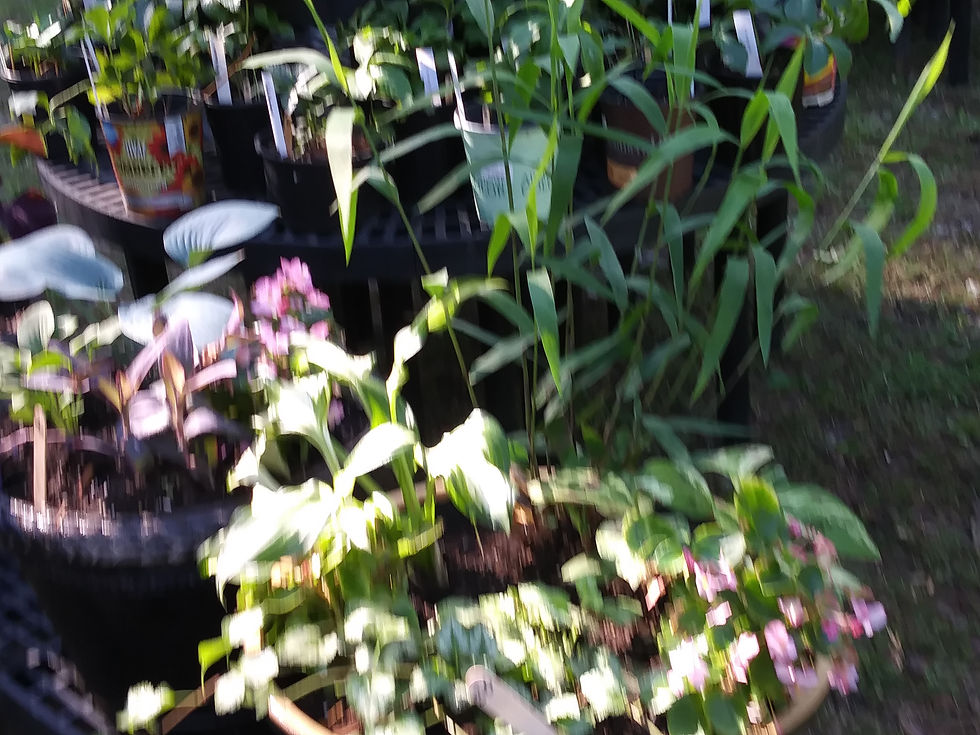Master Gardeners are back for the 2017 Gardening Year!
- Denine Rogers

- May 29, 2017
- 3 min read

I am back playing in the dirt again and to start this gardening year I was able to help out with the Master Gardeners Plant Sale. The weather on this day was very cold in the morning but later on during the day it did get a little warmer around 50 degrees.

I love this time of year where the flowers are starting to bloom and everyone is ready to start planting their newly purchase vegetables, flower, fruits and herbs. This is also the right time to start joining a community garden. But what if you do not have one in your neighborhood? Well, you can start your own by using this 10 basic steps from the American Community Garden Association’s.

1. Organize a Meeting Of Interested People - Determine whether a garden is really needed and wanted, what kind it should be (vegetable, flower, both, organic?), whom it will involve and who benefits. Invite neighbors, tenants, community organizations, gardening and horticultural societies, building superintendents (if it is at an apartment building)—in other words, anyone who is likely to be interested.

2. Form a Planning Committee - This group can be comprised of people who feel committed to the creation of the garden and have the time to devote to it, at least at this initial stage. Choose well-organized persons as garden coordinators Form committees to tackle specific tasks: funding and partnerships, youth activities, construction and communication.

3. Identify All Your Resources - Do a community asset assessment. What skills and resources already exist in the community that can aid in the garden’s creation? Contact local municipal planners about possible sites, as well as horticultural societies and other local sources of information and assistance. Look within your community for people with experience in landscaping and gardening. In Toronto contact the Toronto Community Garden Network.

4. Approach A Sponsor - Some gardens “self-support” through membership dues, but for many, a sponsor is essential for donations of tools, seeds or money. Churches, schools, private businesses or parks and recreation departments are all possible supporters. One garden raised money by selling “square inches” at $5 each to hundreds of sponsors.

5. Choose A Site - Consider the amount of daily sunshine (vegetables need at least six hours a day), availability of water, and soil testing for possible pollutants. Find out who owns the land. Can the gardeners get a lease agreement for at least three years? Will public liability insurance be necessary?

6. Prepare And Develop The Site - In most cases, the land will need considerable preparation for planting. Organize volunteer work crews to clean it, gather materials and decide on the design and plot arrangement.

7. Organize the Garden - Members must decide how many plots are available and how they will be assigned. Allow space for storing tools, making compost and don’t forget the pathways between plots! Plant flowers or shrubs around the garden’s edges to promote good will with non-gardening neighbors, passersby and municipal authorities.

8. Plan for Children - Consider creating a special garden just for kids–including them is essential. Children are not as interested in the size of the harvest but rather in the process of gardening. A separate area set aside for them allows them to explore the garden at their own speed.

9. Determine Rules and Put Them In Writing - The gardeners themselves devise the best ground rules. We are more willing to comply with rules that we have had a hand in creating. Ground rules help gardeners to know what is expected of them. Think of it as a code of behavior. Some examples of issues that are best dealt with by agreed upon rules are: dues, how will the money be used? . How are plots assigned? Will gardeners share tools, meet regularly, handle basic maintenance?

10. Help Members Keep In Touch with Each Other - Good communication ensures a strong community garden with active participation by all. Some ways to do this are: form a telephone tree, create an email list; install a rainproof bulletin board in the garden; have regular celebrations. Community gardens are all about creating and strengthening communities.

Using these steps can help you have a successful community garden this and many years to come!
FYI: Check out Denine Rogers and other expert dietitians sharing their insight about lifestyle and dietary tips for people with type 2 diabetes. Click this link below - https://www.thediabetescouncil.com/lifestyle-dietary-tips-for-diabetes-type-2/









Comments